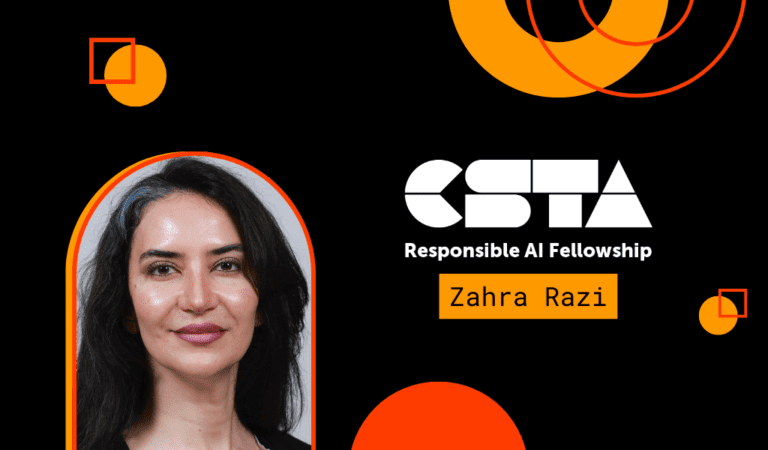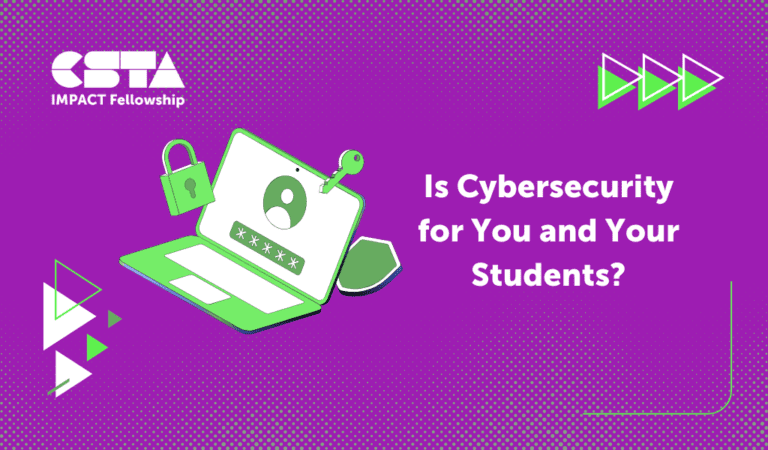
STEM is the acronym for Science, Technology, Engineering, and Math. It was originally created to put a focus on the careers that would have a high need in the future.
Full Story
What is STEM?
STEM is the acronym for Science, Technology, Engineering, and Math. It was originally created to put a focus on the careers that would have a high need in the future. As Computer Science and Technology became more prevalent in our society, we needed a way to increase the focus and interest in these types of careers. Studying these types of disciplines is a way to equip students with a variety of real-world skills, such as critical thinking, communication, and collaboration. Art was later introduced to bring attention to the need to also develop inquiry and problem-based learning methods commonly used in the creative process. Whether you prefer STEM or STEAM, the goal is to increase our workforce in areas that will meet the needs of our future and give students the type of skills that will allow them to be successful in our computer-enriched society.
What is Mental Toughness?
Mental Toughness is like physical strength. The first thing an athlete would have to do to prepare to run a marathon is train. This is the mindset students should have for a STEM career.
Students need the skills to withstand trial and error and persevere when solutions do not present themselves in a timely manner. According to the article “Mental Toughness: Is it the key to academic success?” written by members of the University of West London, UK, Mental Toughness (MT) is a multidimensional psychological construct that conceptualizes the way in which individuals respond to adversity and recover from setbacks. Students with Mental Toughness are not only more resilient in stressful situations but flourish in them. In addition, they define MT within a set of four sub-components as follows:
- Commitment which refers to the level of engagement within a task.
- Control (emotional and life) which describes the extent to which people feel that they exert an influence over situations.
- Challenge characterizes a situation where adversity is seen as an opportunity for self-development.
- Confidence (in abilities and interpersonal) is defined as the resolute belief in the ability to succeed.
The biggest misconception about Mental Toughness is that you need to hide your feelings or not show emotions. People who are higher in Mental Toughness can get just as emotional as those who are lower in Mental Toughness. The difference is that they can bounce back and find the confidence and endurance to try again using a different strategy. Remember, the real definition of insanity is to do the same thing over and over again and expect a different outcome. You can try again but use a different approach or a different strategy to reach your goal.
Do not focus on gender differences. Studies are inconclusive on whether there is a difference between genders in the development of Mental Toughness. A lot of cultural and societal expectations might skew the data. Treat all students without bias from gender differences in developing Mental Toughness.
How do you develop Mental Toughness?
To develop Mental Toughness, STEM students need to complete activities that would be like working out in a gym, except the student performs activities that might require Computational Thinking (CT). CT is a collection of problem-solving activities that involve decomposition, pattern recognition, abstraction, and algorithm designs.
When a student perseveres through a challenging task, they not only have to use mental stamina, but they must use problem-solving skills as well. There are two activities in the past that I have used to increase important CT skills in my students in the classroom: sudoku and creating flow charts.
 Sudoku requires students to use the skills involved in CT, such as decomposition and pattern recognition, and apply rules to solve the puzzles. One of the biggest challenges is how do you measure Mental Toughness? When you are training, you can measure your ability by increasing the amount of weight you can lift or the distance or speed you can run. For sudoku, start a new student off with an Easy puzzle and measure their ability to complete more complex puzzles.
Sudoku requires students to use the skills involved in CT, such as decomposition and pattern recognition, and apply rules to solve the puzzles. One of the biggest challenges is how do you measure Mental Toughness? When you are training, you can measure your ability by increasing the amount of weight you can lift or the distance or speed you can run. For sudoku, start a new student off with an Easy puzzle and measure their ability to complete more complex puzzles.Flowcharts are mainly used in the software development process of writing programs. To utilize flow charts, start students off by thinking about the algorithm they need to solve a problem. Their CT skills are measured by their ability to forward think through the process of designing their code. They will have to understand the algorithm necessary to solve the problem before they can complete a flowchart. Developing flowcharts will require the students to problem-solve while decomposing the problem, looking for patterns, and designing their abstractions, such as procedures or functions.
There are many other activities that would allow a student to increase their Mental Toughness, but they all should be measurable and involve rigorous problem-solving. Include some Computational Thinking activities like sudoku, Tower of Hanoi, puzzles, flowcharting for programming, and Rubik’s Cube. Encourage them to participate in Math Challenges, Hack-a-thons, Science Fairs, Robotics Competitions, or Science Competitions. These are like small races to help them train and prepare for a successful career in a STEM field.
What can teachers do to encourage the development of Mental Toughness?
- Praise them on their efforts and strategies, not just their outcome.
For example:- “I like how you used trial and error and learned from your mistakes.”
- “I like how you started over and did not give up.”
- “I like that you got upset but did not allow that to keep you from trying again. You can learn a lot from failure if you reflect on what happened and try it again.”
- Display posters and encourage them to demonstrate a Growth Mindset. I always make sure my students end their negative statements with “YET.” “I can’t do this” should become “I can’t do this yet.” Explaining the inherent benefits of overcoming obstacles can help students develop a growth mindset, according to Dweck in the article, “10 Ways Teachers Can Instill a Growth Mindset in Students.””She specifically recommends teaching about the effects of the brain when people push through their comfort zones to grasp difficult concepts. The neurons form stronger connections, leading to improved intelligence over time. Therefore, effort and difficulty are paths, not roadblocks, to becoming smarter.”
- Use Experience Points in addition to traditional scoring of assignments (for example, “7 out of 10 points”). Tell them: “You’ve earned 700 experience points out of 1000.” It’s easy for students to forget how much they may have learned since starting a course or topic. Emphasizing that a student has gone from 0 to 700 in earning experience points puts a positive focus on the student’s accomplishments.
- Hold informal competitions in the classroom similar to the platform of formal Math or Science competitions. Break them up into teams, give them a very challenging problem, ask them to start by working on it individually so they can have something to contribute to the team discussion, and then have them work together as a team to solve the problem.
- Incorporate Reflection into their curriculum. Reflection is key for students to understand their control on learning material and building their confidence when taking on tasks that they once seen as challenging.
- Have students Identify Heroes who have demonstrated Mental Toughness. An effective method to introducing Mental Toughness is allowing students to research and read about real-life examples of people who have shown Mental Toughness. My hero has always been Harriet Tubman. When I read about her, I admired what I perceived as her Mental Toughness. Students need examples to follow, even if it is someone in the community or a family member.
Conclusion
In conclusion, be diligent about creating effective goals with reflection, encourage them to explore opportunities to build up their mental Toughness, and work to instill a Growth Mindset in your students.
References:
Hunt, F., Usher, L., Poliak, L., Stock, R., Lynam, S., Cachia, M. (2017). “Mental Toughness: Is it the key to academic success?”, New Vistas, Volume 2, Issue 1 University of West London, https://www.researchgate.net/publication/315575770_Mental_Toughness_Is_it_the_key_to_academic_success
Guido, M., (2016), “10 Ways Teachers Can Instill a Growth Mindset in Students”,
Professor Clough, P., (2019), “Teaching mental toughness to those who aren’t”
About the Author
 Anita Debarlaben earned a BS in Electrical Engineering and a Masters in Computer Science. After writing software for over 18 years she changed her career to education. She truly believes that some students need to “see one to be one” so she was determined to reach, teach and encourage as many students as possible to enter STEM careers. She recently joined University of Chicago Laboratory Schools (UCLS) as a high school CS teacher where she teaches AI and Machine Learning and Introduction to Programming. Prior to joining UCLS, she taught Mathematics and Computer Science for over 10 years. Last year Anita earned the AP Computer Science Principles Female Diversity Award for increasing her female enrollment from less than 10% to almost 50%. Anita is also proud to be chosen as a state finalist for the Presidential Award for Excellence in Math and Science Teachers (PAEMST) for 2021.
Anita Debarlaben earned a BS in Electrical Engineering and a Masters in Computer Science. After writing software for over 18 years she changed her career to education. She truly believes that some students need to “see one to be one” so she was determined to reach, teach and encourage as many students as possible to enter STEM careers. She recently joined University of Chicago Laboratory Schools (UCLS) as a high school CS teacher where she teaches AI and Machine Learning and Introduction to Programming. Prior to joining UCLS, she taught Mathematics and Computer Science for over 10 years. Last year Anita earned the AP Computer Science Principles Female Diversity Award for increasing her female enrollment from less than 10% to almost 50%. Anita is also proud to be chosen as a state finalist for the Presidential Award for Excellence in Math and Science Teachers (PAEMST) for 2021.



